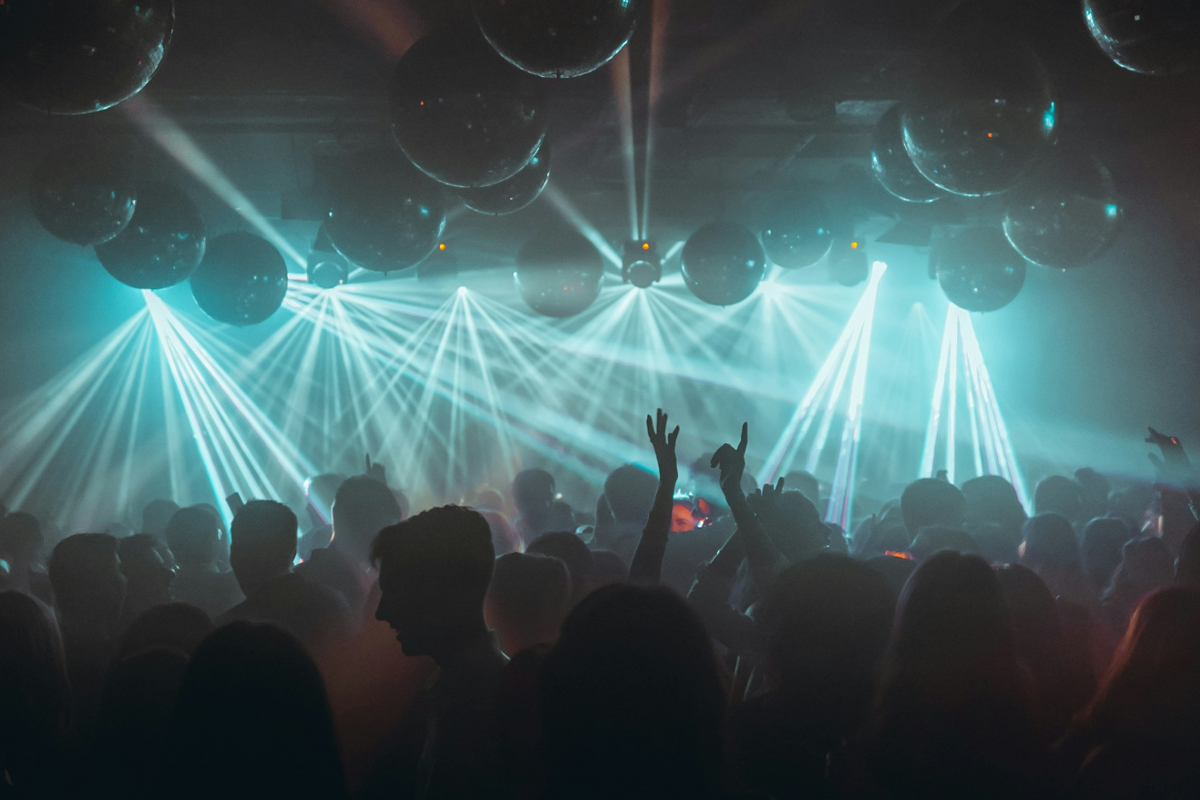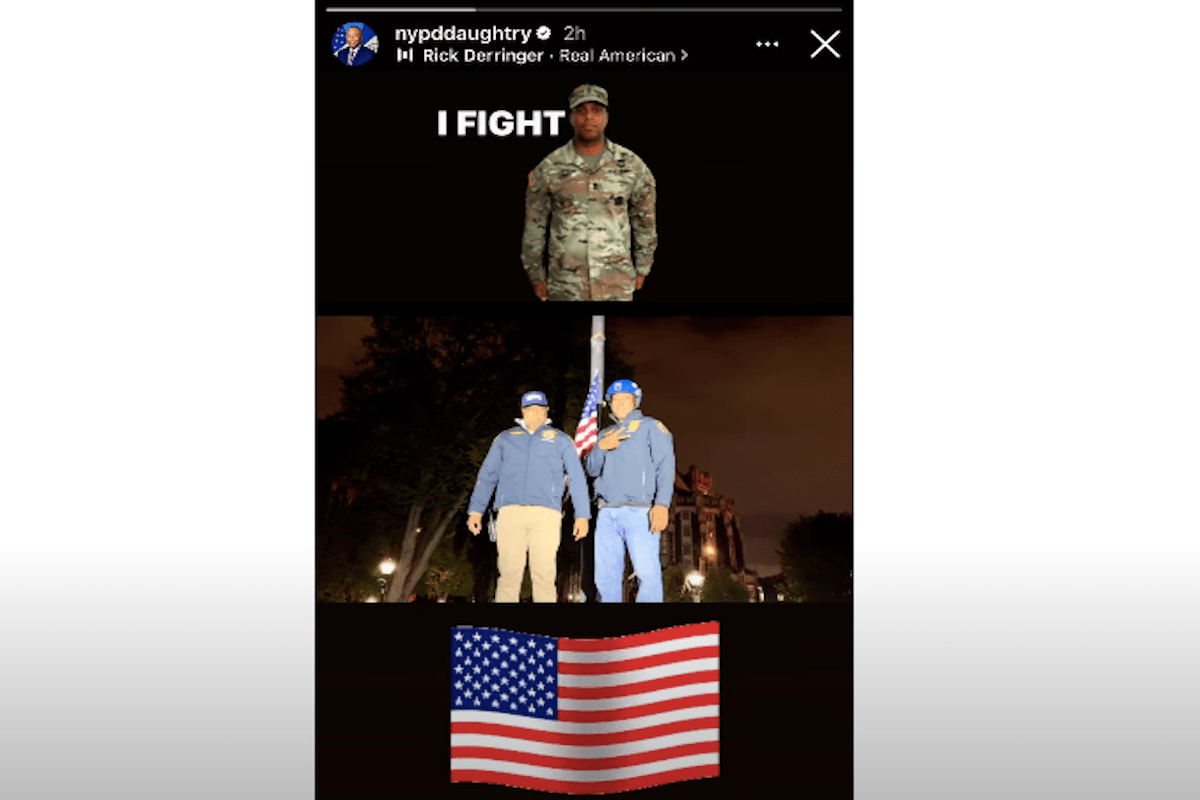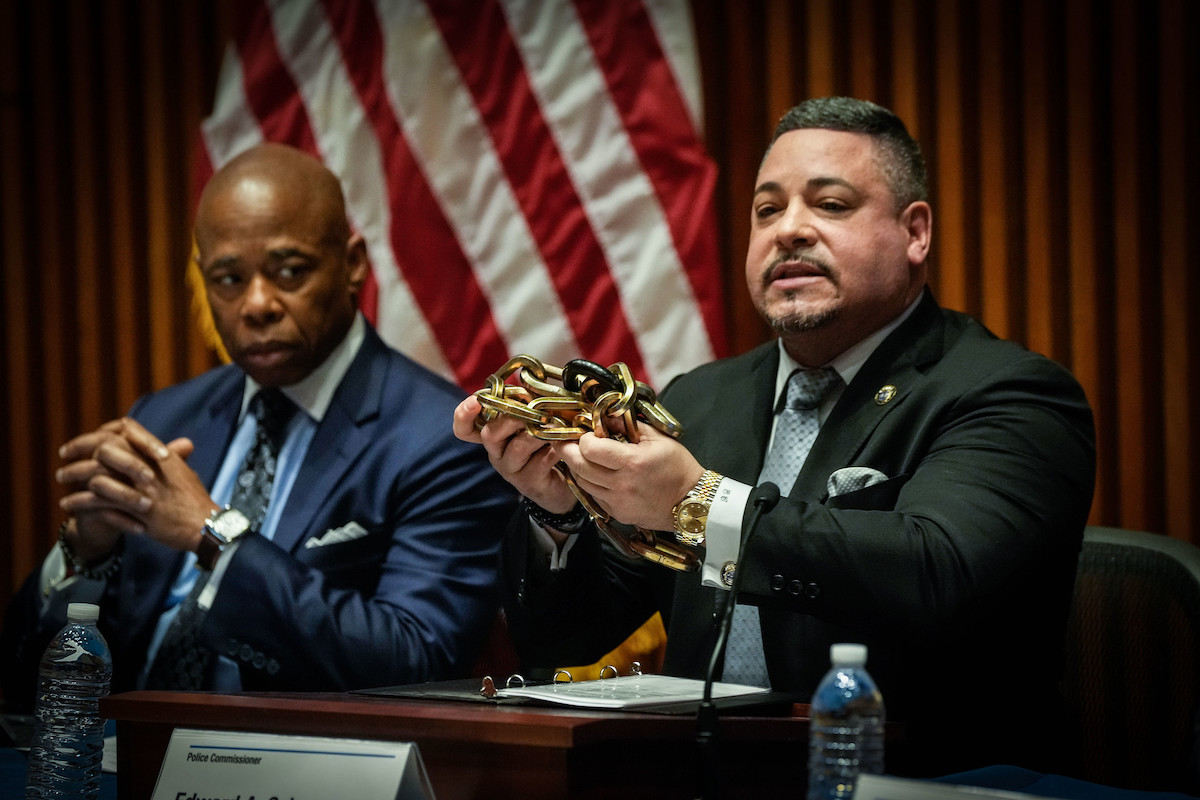How Much Fentanyl Is Actually in NYC’s Club Drugs?
Rumors abound on social media—but experts say that there is no proof that fentanyl has seeped into the city's supply of MDMA and ketamine.
12:08 PM EDT on April 1, 2024

(Unsplash / Kajetan Sumila)
Last Halloween weekend, a raver named Moss watched an EMS worker at a popular underground party use 20 doses of Narcan in less than 12 hours. Moss, who asked to use only their first name so they could talk openly about illicit drug use, regularly works at a different large underground party and had seen EMTs administer the opioid overdose reversal drug before, but never at this rate. "It was fucking scary," they said. "The way that people mix drugs makes it very hard to understand exactly where the fentanyl is coming from."
Moss didn't know what people were taking during that party, which was attended by a couple thousand people, although they suspected it might be the popular combination of cocaine and ketamine, or maybe MDMA. What they knew for sure was that at many parties where they worked, or simply danced, many people appeared to be overdosing on opioids after taking club drugs. In recent months, they said, "it's only gotten worse."
Since the reopening of nightlife in May 2021, New York City's electronic music scene has buzzed with rumors that MDMA, ketamine, and other drugs often used at clubs, raves, and festivals are widely contaminated with fentanyl. On many Monday mornings, Instagram stories are screenshotted and reposted dozens of times, warning of friends of friends who died that weekend from a fentanyl overdose, with others claiming in widely shared posts that "fentanyl is everywhere."
Evidence abounds that cocaine nationwide is regularly cut or contaminated with fentanyl. Many New Yorkers have died of opioid overdoses following cocaine use, and ravers across the country have been on high alert since January, when the beloved DJ Silent Servant died of a suspected fentanyl poisoning in his Los Angeles apartment.
But New Yorkers who research drugs often consumed at parties, and EMS staff who work at these events, say that there is no proof that fentanyl has seeped into the New York supply of other club drugs like MDMA and ketamine.
"I've never seen it, and nobody I know has ever seen it, and I talk to people all over the world who check drugs almost every day," said Mohawk Greene, a harm reduction researcher and the former New York chapter lead of the nightlife harm reduction organization DanceSafe. "It's not impossible, and there could be edge cases. But especially with algorithms, hysteria always beats out fact-based information."
There is no comprehensive or centralized data about the presence of fentanyl in club drugs, or deaths as a result of that use. In New York, the most robust information about overdose deaths and drug seizures is siloed away in NYPD records, which the department notoriously refuses to share with the public or reporters.
What is available comes from individual researchers like Greene, and the Department of Health and Mental Hygiene. Since November 2021, DOHMH has run a multi-site pilot program for drug checking, in which a trained specialist uses an infrared spectrometer to analyze the full contents of a sample brought in by a user. The pilot caters to opioid users and thus mostly tests opioids, but anyone can use the service to test any drug. DOHMH did not make specific data available to Hell Gate and cautioned that their results are not representative of the overall drug supply, but said that to date, no samples they've received of MDMA, ketamine, 2C-B, LSD, or GHB have tested positive for fentanyl.
DOHMH's latest survey of drug overdose deaths in New York City, using data from 2022, offers a similar narrative. According to DOHMH, cocaine was present in 55 percent of opioid—primarily fentanyl—overdose deaths, although this does not necessarily mean that the cocaine contained fentanyl, only that someone had used both in the time period before they died. But there were no findings related to MDMA, ketamine, or other club drugs. When Hell Gate asked whether this means those drugs were not involved in any deaths, DOHMH said that the absence of a particular drug indicates that it likely "does not substantially contribute to overdose deaths in New York City."
Independent research tends to be aligned with DOHMH's data. Joseph J. Palamar, an NYU professor who studies nightlife drug use, has turned up few instances of unintentional fentanyl exposure in his ongoing research. In several studies, Palamar surveyed people entering nightclubs about their drug use and took a hair sample for analysis, then compared the results with what people said they'd taken. Out of hundreds of people, he said that only two or three, all cocaine or ecstasy users, tested positive for fentanyl without noting they'd taken it. He is currently conducting another study using saliva samples, and out of 70 people so far, only one—a cocaine user—had a positive fentanyl result.
Today we launched NYC’s first public health vending machine. Located in Brooklyn and hosted by @sus_org, the machine provides 24/7 access to free, lifesaving harm reduction supplies, including naloxone. Learn more: https://t.co/dDNyz6LZzh pic.twitter.com/l6YfOKLHX1
— nychealthy (@nycHealthy) June 5, 2023
Greene and other harm reductionists told Hell Gate they've heard of only one known death from fentanyl-contaminated MDMA, which happened in 2018 in Colorado. DanceSafe, the largest organization of its kind in the U.S., has lab-confirmed only three cases of fentanyl-laced MDMA, none of which came from New York. "That doesn't mean it isn't happening at all, but if it was a serious problem, we would be hearing about it a lot more," Greene noted.
This could change at any time, however. "We recently found that 99 percent of ketamine seized is already in powder form, not pharmaceutical liquid vials, which worries me because this means that dealers can more easily cut ketamine with fentanyl or other drugs," said Palamar, whose research interest stems from his days raving in the city in the 1990s. "Whereas back in my day, most ketamine used in the club scene was pharmaceutical-grade and stolen from veterinarians, and then cooked into powder."
Because there's always a possibility that fentanyl may become more common in drugs where it's currently nonexistent, Greene, Palamar, and DOHMH emphasized that people who use drugs should still test anything they plan to take, always carry naloxone, and never use drugs alone. Narcan—a patented delivery system for naloxone—and fentanyl test strips are available for free at any of the City's dozens of opioid overdose prevention sites, as well as a vending machine at 1676 Broadway in Brooklyn. Anyone using solo can call the Never Use Alone hotline to have someone stay on the phone with them until they're out of the overdose danger zone.
Over a dozen ravers who habitually test their drugs told Hell Gate they've gotten positive results on MDMA or ketamine using fentanyl test strips. People who professionally test drugs, on the other hand, said that every positive result they've gotten has been a false alarm.
"The strips are wonky," said Yarelix Estrada, who works with the Alliance for Collaborative Drug Checking, an international organization dedicated to improving drug checking in harm reduction settings. (Full disclosure: As the New York nightlife harm reduction world is small, I worked once alongside Estrada and Greene at a festival upstate.) Estrada noted that many false positives are due to misuse—incorrectly diluting a sample, or misinterpreting the result. When she gets a positive result with club drugs, she checks the sample again, given that test strips can sometimes cross-react to substances that aren't fentanyl. On the second try, Estrada always gets a negative. Sometimes, she also sends a sample to get lab-tested, the most accurate analysis available, and all of those results have come back negative, too.
Still, false positives have a cumulative, and dangerous, effect. When people get positive results multiple times, especially if they're hearing that there’s fentanyl in everything, they may simply give up on trying to use more safely. "People will stop testing if they think there's no point, or if they don't want to know," Estrada said.
In addition to positive tests, a major source of fear among clubgoers is incidents like what Moss observed: people who become unresponsive at parties and then appear to get revived by someone administering naloxone. EMS workers who spoke to Hell Gate cautioned against assuming this always indicates an opioid overdose, pointing to the varied reasons why someone might pass out at a party—like dehydration, overheating, or the effects of another drug.
In the chaos of such moments, even trained staff can misread the situation. "If someone's main experience is as a regular EMS worker, they are responding to a lot of opioid overdoses, so if they see someone who's passed out, their instinct will be to use Narcan," said Danny, an EMT who has worked in nightlife since 2010, most recently at House of Yes. (Danny is using only his first name because his other employers would frown on his nightlife work.) "But if they've been in a lot of party settings, they would be less inclined, because they know that it is most likely something else." Danny works every weekend, sometimes multiple nights, and says he has used naloxone only two or three times in the last five years.
Greene and Estrada described concerns around fentanyl in club drugs as "fearmongering," and said that it is actually most harmful to habitual opioid users, not ravers. According to the DOHMH brief, just 7.3 percent of drug overdose deaths in 2022 occurred in public indoor settings, a broad category that includes nightclubs. The majority, 60.2 percent, happened in private homes. And since 2019, more overdose deaths have been occurring outdoors and in SROs and supportive housing—the places where the most vulnerable users live.
"A lot of the hysteria around this ends up stigmatizing certain people who use drugs even further, by which I mean poor Black and brown folks," said Greene. Stigma is a pillar of the criminalization of drugs, and at a time when multiple states are passing laws that single out fentanyl for harsher penalties and sentencing enhancements, any additional stigma pushes the most vulnerable users further into the margins, and closer to law enforcement. "Cops want to criminalize people who use fentanyl and people who sell fentanyl, so if people are claiming that there’s fentanyl in things that are not opioids, it just creates more narratives for police to use," said Estrada.
Unsubstantiated fear also just ruins the vibe. "I've had people tell me they stopped using ketamine because they believed there's fentanyl in everything, which is really denying yourself the bodily autonomy to seek pleasure," Estrada said. "But you absolutely can find what you want and have a safe time. Just always test and always carry naloxone.
Thanks for reading!
Give us your email address to keep reading two more articles for free
See all subscription optionsZoë Beery is a freelance writer and nightlife harm reduction organizer based in Brooklyn. You can read more of her writing at zoebeery.com.
Stay in touch
Sign up for our free newsletter
More from Hell Gate
We Can’t Afford Public Libraries But Check Out This Sick NYPD Media Production Celebrating the American Flag
The mayor and his police brass are obsessed with a piece of jingoistic propaganda they staged after arresting a bunch of college kids. They’re right to be, it’s awesome.
Crackhead Barney Wants to See You at a Protest
Just don’t ask New York City’s foremost living performance artist why she does what she does.
Burmese Bites Brings Their Big, Funky Flavors to Midtown
"My motto is: Burmese food should be known throughout the world."
The ‘Outside Agitator’ Narrative Is Getting Pretty Messy
These tidbits raise more questions than they answer.




